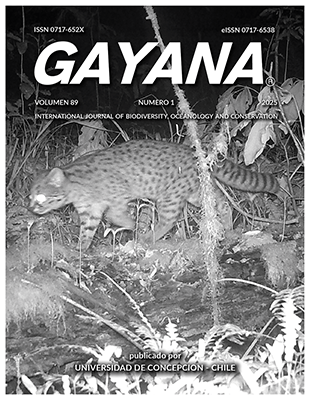Abstract
The large hairy armadillo (Chaetophractus villosus) is native to Paraguay, Bolivia, Argentina, and Chile. It was introduced to Isla Grande de Tierra del Fuego (TdF), an island shared by Chile and Argentina, in 1982. Its rapid spread in TdF poses a threat to native species. We evaluated the species’ potential niche shift and expansion in the island ecosystem. Using species occurrence records, bioclimatic variables, and modeling frameworks (COUE and n-dimensional hypervolumes), we compared the climatic niches of the native and invasive ranges. Our results suggest that C. villosus has encountered new climatic conditions in TdF, showing niche differentiation while retaining similarities to its native range. Species Distribution Models (SDMs) under current and future climate scenarios (ssp126 and ssp585) predict southward expansion, driven by climate change. These findings highlight the species’ adaptability and potential for further colonization, emphasizing the need for proactive management to mitigate its ecological impact on TdF’s fragile ecosystem.

This work is licensed under a Creative Commons Attribution-NonCommercial 4.0 International License.
Copyright (c) 2025 Rominna Pasutti Morales, Camilo Matus, Claudia Cerda, Mariella Superina

